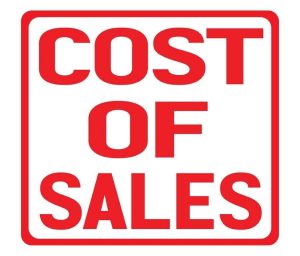 Probably the biggest challenge we faced in building the Barefoot Wine Brand was to understand the cost of sales. We are not talking about the cost of goods, which was relatively obvious, but the cost of sales, which was a lot less apparent and hidden in many cases (no pun intended).
Probably the biggest challenge we faced in building the Barefoot Wine Brand was to understand the cost of sales. We are not talking about the cost of goods, which was relatively obvious, but the cost of sales, which was a lot less apparent and hidden in many cases (no pun intended).
When we started off, we focused on the cost of the goods we were selling. We thought gross profits were a simple calculation where you subtracted the cost of goods from what you sold the product for and voila! Profit! Wrong!
This type of thinking is very prevalent among the general public and that can translate into poor decisions by physical product brand builders who buy into this over simplicafication. How often do you hear, “They must be making a bundle because their costs of goods is so low,” or worse, “They are gouging because their costs are so low.” When people get into a business where they are selling a physical product, they can take this misconception to the market, but not to the bank.
We initially made projections based on expanding our brand without fully realizing the cost of sales. It practically killed us. Fortunately, we were saved in the nick of time by a cost accountant who demonstrated something to us that we should have realized from day one. The further away our sale was from our production, the more the cost of sales. Not the obvious stuff like shipping, but the subtle stuff like servicing our sales, overseeing distribution, regional taxes, bill backs, product mix, and business practices in different markets.
Today, we advise all our clients who hope to build physical product brands to start with a cost accountant. They will not only give you a much truer picture of your costs of sales, but in doing so, they will show you the implications of growth and expansion strategies you may be considering.
For instance, we thought we’d sell in New York City. It seemed like a great way to grow our brand and get known to the greatest number of people concentrated in a relatively small space. We thought brands start in New York and the rest of the country follows. We were already a hit in California. This all sounded efficient, exciting, and doable. Our price was right, we had the accolades, and we had the quality. When we presented the idea to our cost accountant, he said in classic New York-ease, “Forget about it!”
Why? Our cost of sales in that market would be astronomical. And even if we wanted to play ‘lost liter’ just to be there for the perceived brand building advantage, we couldn’t afford to subsidize the cost of sales in that market. Our cash flow from the other markets were we were established simply wasn’t strong enough yet to support the market. New York City, because of its taxes, peculiar laws, low holding power, high cost of delivery, and expensive customer service was actually the last place in the country to get our product – thanks to our cost accountant.
In fact, our expansion strategy became based on the cost of sales. Our discounting and promotional programs were created to satisfy each particular market’s product mix, cost of maintenance, service, and merchandising. After a while we got good at projecting and comparing these costs. The cost of sales analysis became the deciding factor in where we would go next. It saved us!
So don’t get all excited just because you can save a few bucks here or there in production and think this will necessarily translate into profits. Consider where you are selling your products and what your cost of sales will be to do it. Sales is King, but Cost Accounting is Queen!
